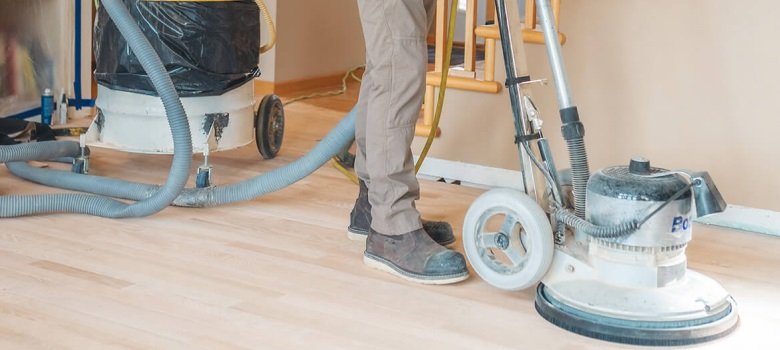
Flooring Tips
Renovating your home can be an exciting and rewarding experience… but it also comes with its fair share of challenges. One common task during the renovation process is sanding the floors to give them a fresh and polished look. If you’re planning out your project, odds are you’re wondering how much time and effort this process will require.Since you don’t have endless time to sand your floors (or read this article) we’ll get straight to the point.Read on for the top 12 factors that impact your floor sanding project so you can move from planning to the next exciting stage of your home improvement project.Explore Our Range of Timber Floors Below:
Larger floors, such as those found in spacious living rooms or open-concept areas, will naturally take more time to sand compared to smaller rooms like bedrooms or hallways. The time frame for sanding an average-sized room with a standard floor can range from one to two days, including preparation and clean-up time.
Timber floors are the most common type, but different species of timber can have varying densities, which affects the sanding process. Additionally, if the floor is already in poor condition with deep scratches, dents, or uneven areas, it may require more extensive sanding, which will take longer. For moderately damaged floors, sanding can typically be completed within two to three days.
Different sanding methods result in differing project timelines. For example, traditional drum sanders, orbital sanders, and more advanced dustless sanding techniques will all impact how long your new floors take. Each method has its pros and cons in terms of efficiency and precision. Dustless sanding, for instance, may take less time due to its enhanced dust collection capabilities, reducing the need for clean-up between sanding passes. With a dustless sanding approach, the time needed for sanding can be shortened by approximately 25%.Learn More about the Floor Sanding Process
The number of sanding passes required depends on the initial condition of the floor and the desired outcome. A timber floor with extensive damage will likely require more sanding compared to a relatively well-maintained floor that only needs a light sanding. On average, professional floor sanders may make two to three passes to achieve a smooth and even surface. This process, along with additional sanding for targeted problem areas, can take an additional day.
After sanding the floor, you'll need to decide on the type of finish you want. Some finishes require additional drying or curing time, which will impact the overall duration of the project. For instance, a polyurethane finish may take longer to dry compared to a water-based finish. Water-based finishes tend to dry within a few hours, while oil-based finishes may require up to 24 hours between coats. Taking drying times into account, finishing the floor can add another day or two to the project timeline.Floor Sanding vs. Buffing: Is there a Difference? (Hint: Yes)
The experience and skill level of the person sanding the floor can significantly influence the time required. Hiring a professional floor sanding company in Perth will generally lead to a faster and more efficient job. Professionals have the expertise, equipment, and knowledge to tackle various floor types and conditions. On average, professional floor sanders may take two to four days to complete the sanding and finishing process for an average-sized room.Floor Sanding Pros and Cons Compared
Preparing the area, removing furniture, and ensuring the floor is ready for sanding all take time. Similarly, after sanding, there will be dust and debris that needs thorough cleaning to reveal the true beauty of your newly sanded floor. Preparation and clean-up can add an extra day to the overall time frame.
Some finishes, like oil-based polyurethane, require several coats, with drying time between each coat. On average, each coat of finish may take anywhere from 4 to 24 hours to dry, depending on the product and environmental conditions. For example, a water-based finish might dry within 4 to 6 hours, allowing for quicker application of subsequent coats. In contrast, oil-based finishes might take 12 to 24 hours to dry completely, which can extend the project duration.
Perth's weather can be variable, with hot, dry summers and cooler, wet winters. High humidity levels can slow down the drying process for certain finishes, while extremely dry conditions might cause the timber to contract, potentially affecting the final outcome. If the floor sanding and finishing are done during the cooler, wetter months, you may need to allow additional drying time, potentially adding a day or two to the project.
If the floor is located on an upper level of a building with limited access, it may take longer to move equipment and materials, leading to a slightly extended project timeline. Similarly, if there are fixed obstacles like built-in furniture or cabinetry that cannot be easily removed, the floor sanding process may need to be adjusted to work around them, potentially adding extra time. Handling such obstacles and ensuring precision in difficult-to-reach areas may require an additional day for the project.
In some cases, especially with certain finishes or multiple coats, allowing the floor to rest or cure between sanding passes is necessary. This can be especially true when using oil-based finishes, which require more drying time between coats. While this might extend the overall project duration, it is essential to ensure the finish adheres correctly and results in a durable and long-lasting surface. Depending on the number of coats and the specific finish used, you might need to factor in one to two additional days for curing and resting periods.
DIY sanding can be time-consuming, especially if you are not familiar with the process or lack the proper equipment. Additionally, mistakes can happen, leading to the need for corrective actions, which may further prolong the project. If you choose to go the DIY route, be sure to allocate sufficient time, do thorough research, and seek advice from professionals if needed. On average, a DIY floor sanding project for an average-sized room can take anywhere from four to seven days, including preparation, sanding, finishing, and curing time.P.S. Here’s How to Find Perth’s Best Floor Sanders
The time it takes to sand a floor in Perth can vary widely based on factors such as:
Whether you hire professionals or take the DIY route
Allen Brothers Flooring knows all things flooring. We help our clients from the very start of the process with free onsite quotes so you know what to expect.Every project we take on is managed with the highest quality and attention to detail. We’re proud to be Australian and family owned with over 14 years of experience in the flooring industry.
Call us on 0407 983 020 or request an obligation-free quote online today!

